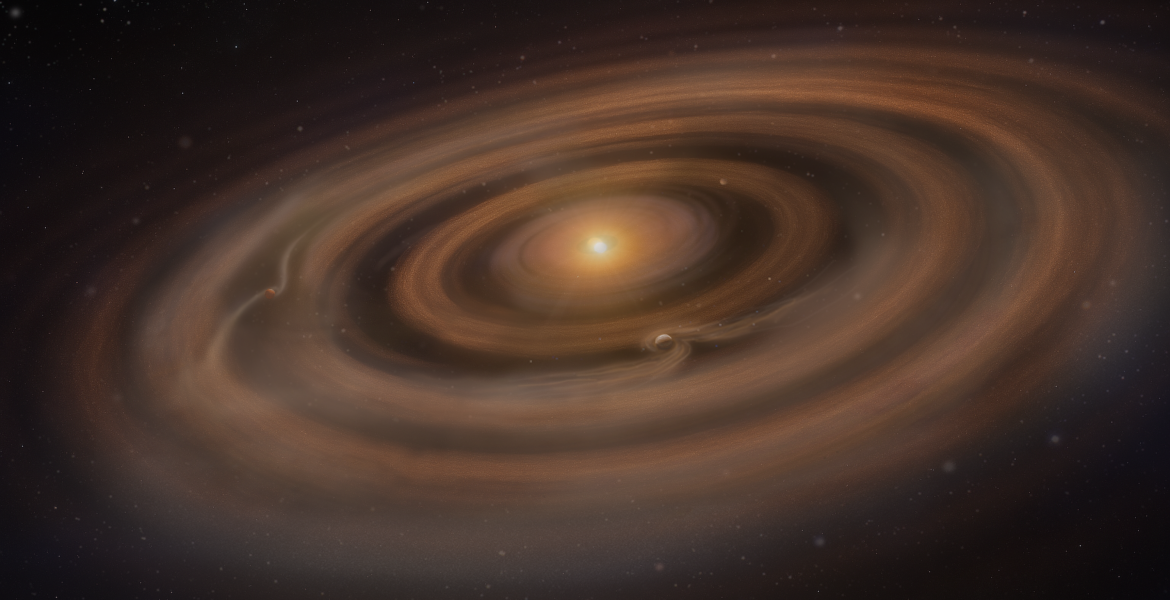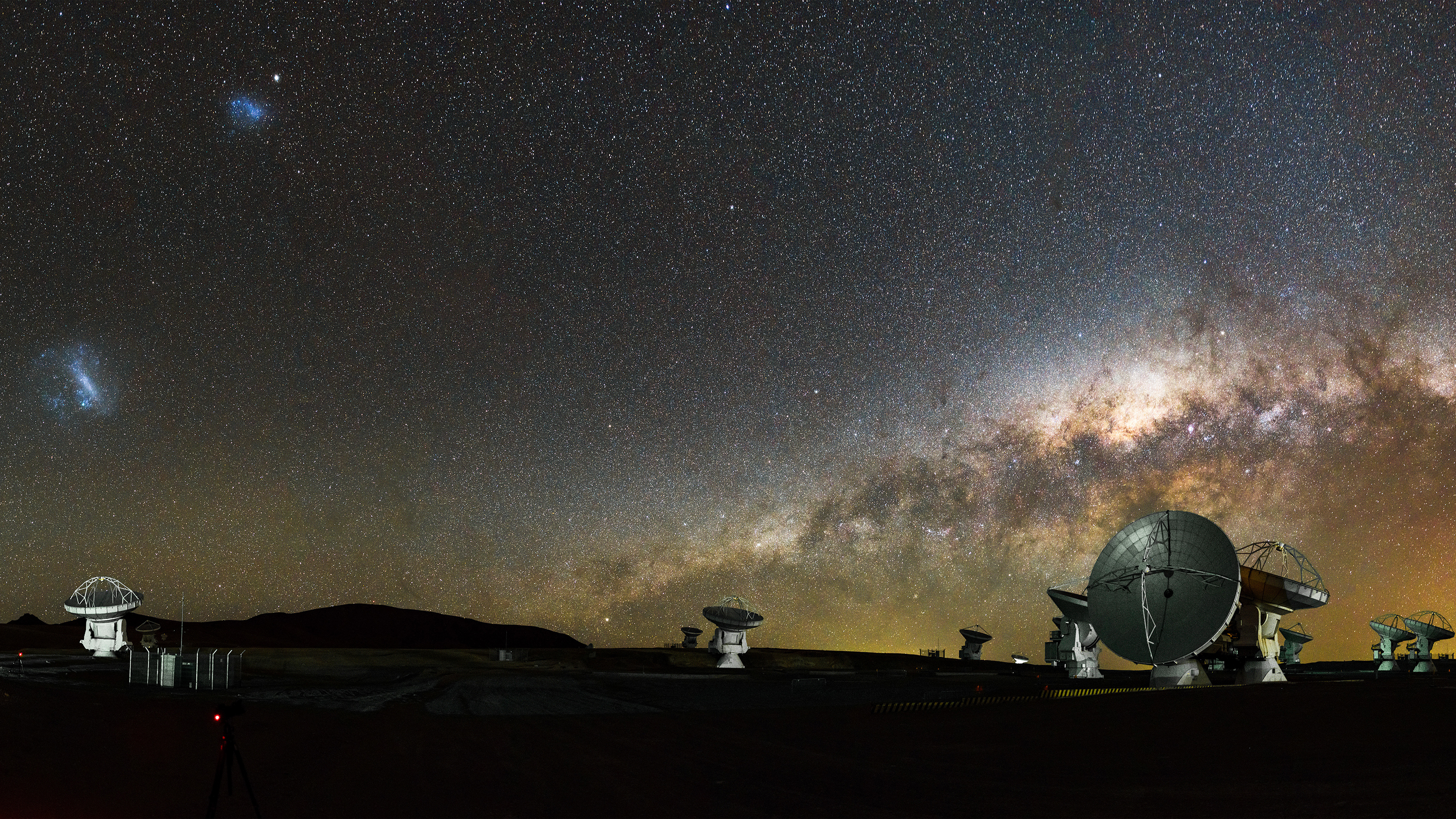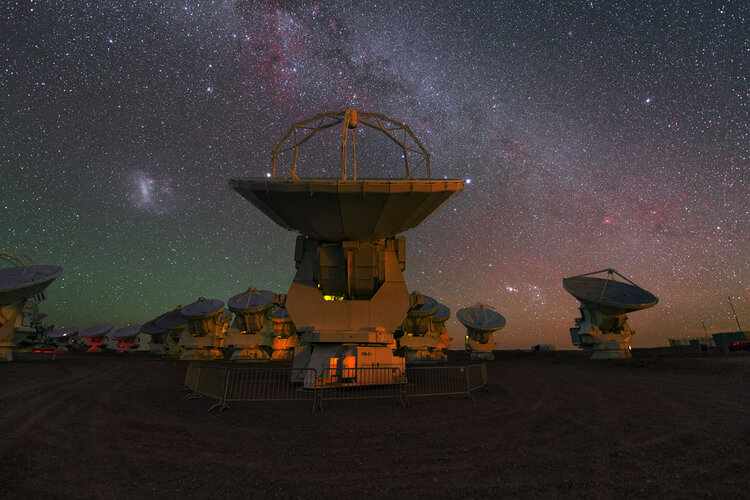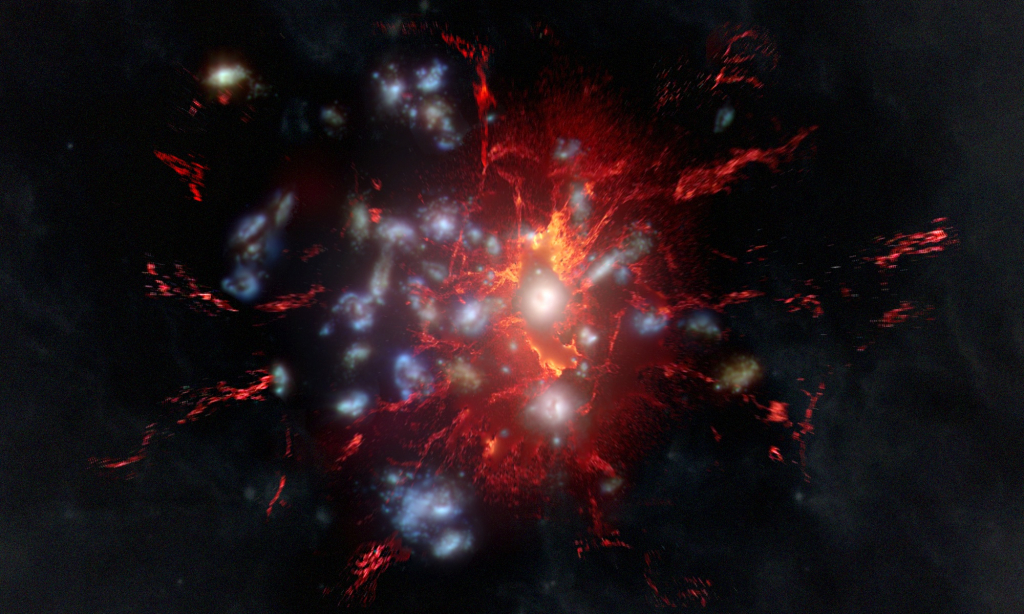Thanks to newly developed advanced imaging techniques, exoALMA, which uses the powerful Atacama Large Millimeter/submillimeter Array (ALMA), has revealed the most exquisite images of young solar systems, never before seen by astronomers.


Apr 30, 2025
Thanks to newly developed advanced imaging techniques, exoALMA, which uses the powerful Atacama Large Millimeter/submillimeter Array (ALMA), has revealed the most exquisite images of young solar systems, never before seen by astronomers.

Apr 10, 2025
A team of astronomers has used archived ALMA observations to identify for the first time the characteristic radio recombination lines associated with shells of ionized gas surrounding Solar System-sized proplyd disks in the Orion Nebula Cluster, at a distance of 1000 light-years from Earth.

Mar 19, 2025
An international team of astronomers using the Atacama Large Millimeter/submillimeter Array (ALMA) have sharpened our view of the turbulent region surrounding the supermassive black hole at the core of our galaxy by a factor of 100, discovering a surprising new filamentary structure in this mysterious region of space.

Mar 17, 2025
Astronomers using the Atacama Large Millimeter/submillimeter Array (ALMA), along with complementary data from the Atacama Pathfinder Experiment (APEX), have discovered a surprisingly large reservoir of molecular gas in a protocluster of galaxies known as SPT2349-56.